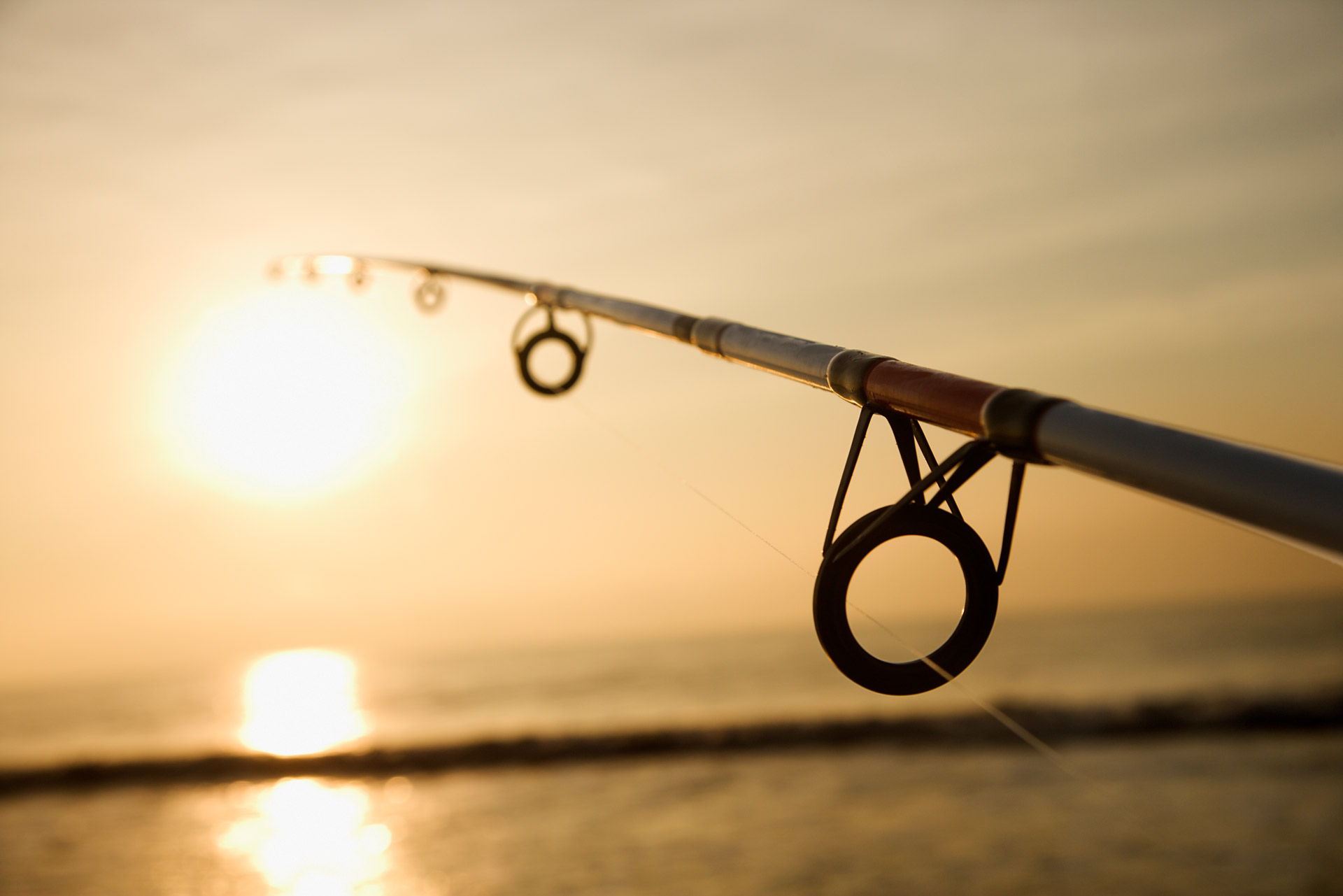Best Lure Colors for Bass Fishing - Guide and Tips
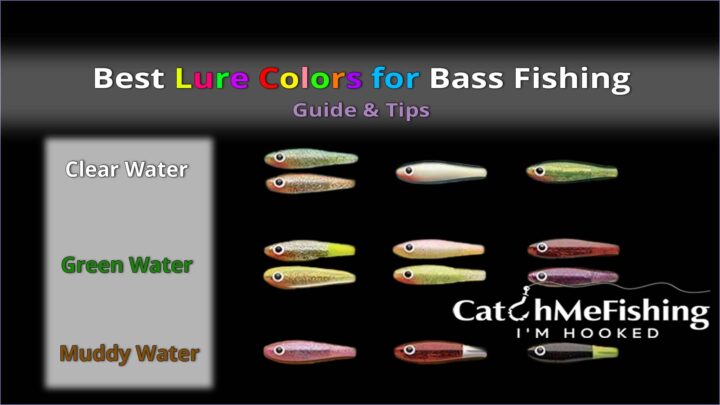
Lures are an important part of bass fishing and depending on what bass lure you pick will play a big role in the success of your fishing trips. To help you choose the best lure colors for bass, I have created this guide that is filled with tips and tricks to consider when choosing a lure color for your next fishing trip.
With this information, you'll be able to make an informed decision about which lure color is best for your situation!
Choosing a Lure Color
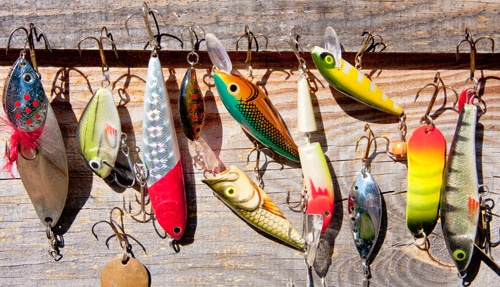
When it comes to bass fishing, everything should be taken into account. The primary aim of a fisher is locating the target fish, finding the best spots, and developing techniques for catching big bass.
In order to catch as many bass as you wish, you need to be fully prepared with all the necessary equipment and inventory. Choosing the right rods, reels, baits, and lures is the most important part of getting ready for a productive fishing experience.
Other than choosing what kind of baits and lures are most efficient, you need to choose their color. As there are an endless amount of color combinations you have to choose based on some characteristic. For instance, it’s best if you pay careful attention to water clarity, water level, weather, season, and time of the day.
Some anglers think lure color plays an insignificant role in catching fish and a fisherman should concentrate on finding the best locations where trophy-sized bass could be caught. Locating and catching bass with a witty strategy is far more important than spending too much time choosing lure colors and patterns.
But, many fishers believe that the color of the lure is just as important as other factors. After all, it’s what the fish sees. We need to think from the eye of the fish to lure them with attractive and interesting objects.
As bass are opportunistic creatures, they’ll eat most things that come across their way and will hunt all the objects that interest them. Our job is to make the lures look attractive and clear to see. We need to create a good contrast between the lure and water, so that fish will see it right away.
Lure color depends on lots of factors but the lure type isn’t important for this matter. Although, the most common color for a soft plastic worm is a neutral one but other than that don’t think too much about the lure types to choose the color.
Many anglers prefer green pumpkin lures, as it matches the hatches perfectly, it’s easy for bass to notice straight away, and can be used anywhere. So, if you’re not sure what kind of water clarity and weather conditions you’ll be dealing with buying a green pumpkin lure is always the safest and quickest way to go.
Choosing a lure color is relatively easy for experienced fishers as they pick one from their own knowledge and past successes but when it comes to a beginner, it’s a little overwhelming to choose from thousands of colors and patterns the shops offer.
Let’s make the process easier and dive deeper into more detail about the most important cases when different colors work the best.
Lure Color Based on Water Clarity
When it comes to fishing, there are a variety of factors that will determine what type of lure you should use. One of the most important factors is water clarity.
Lure Color in Clear Water
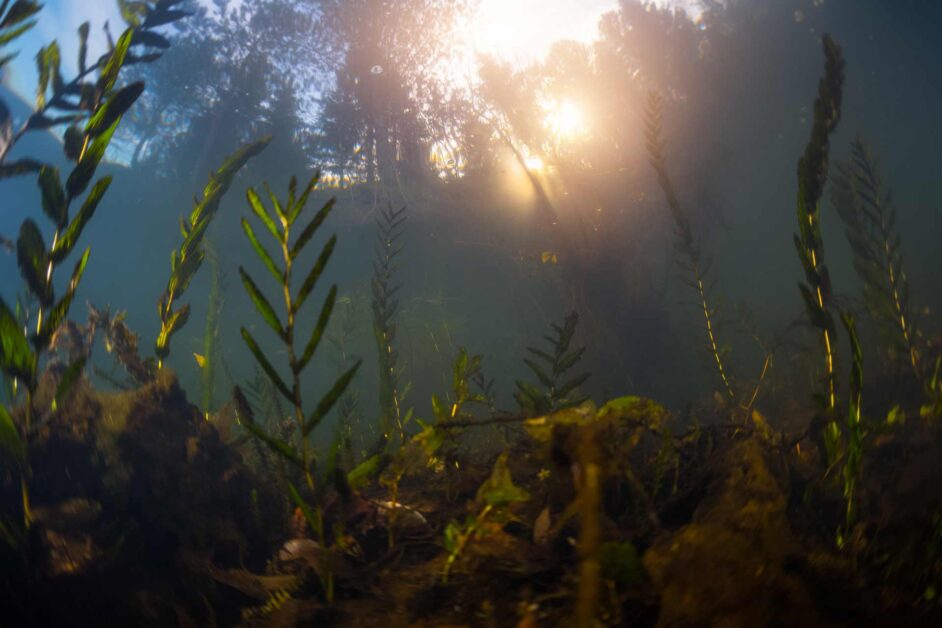
Clear water is usually found near rivers or fast-moving streams.
The best lure colors in clear, clean waters are light colors. Subtle colorered lures create a great contrast in easily see-through water.
When the water is clear, bass have normal visibility and manage to locate their targets easily. So, you should use natural colors that actually look like water creatures and bass will be fooled by them easily.
The most common colors for clear water are white, light blue, and any other light natural colors. These colors mimic various fish that bass usually go after, such as sunfish, crawfish, and shad.
Lure Color in Muddy Water
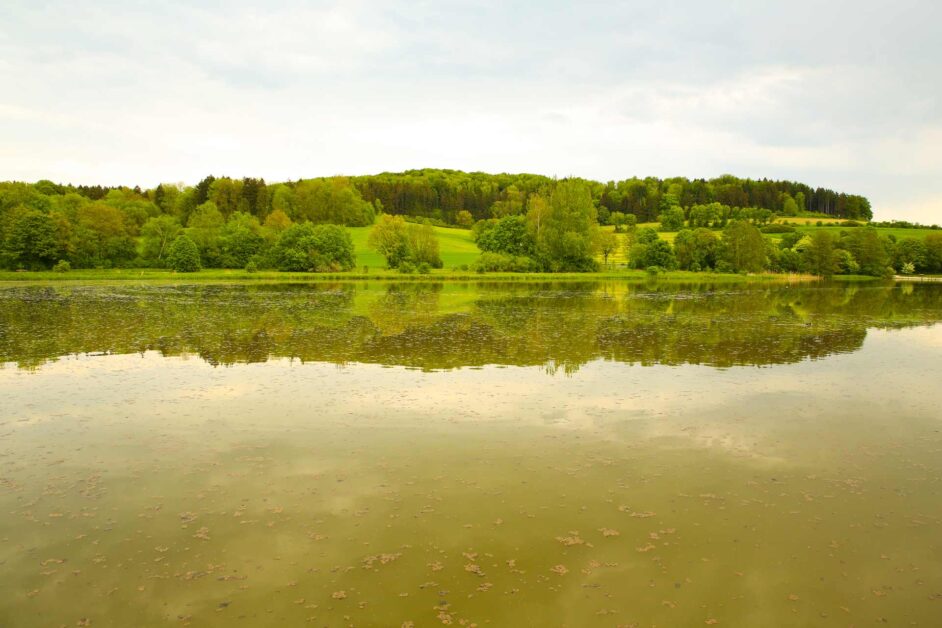
The best colored lures for murky, stained, or muddy water are bright ones because they create a good contrast compared to the level of darkness of the water.
Stained water creates a barrier for the fish and significantly lowers their visibility, therefore you should use vibrant colors like orange, yellow, bright red, vibrant green, and lime green. Yellow or orange crankbaits with dark green sides are used most commonly.
You should use crankbaits and other lures that will create a lot of noise and vibrations in murky water. This will make up for the loss of vision the fish have.
Topwater Lure Colors
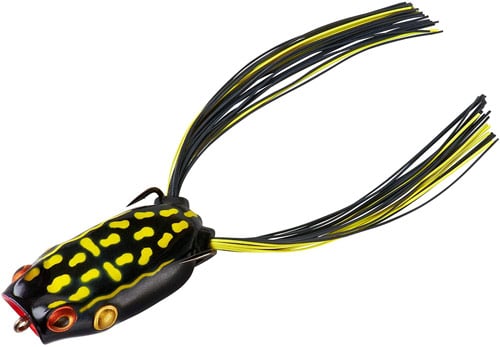
Lures with dark colors and patterns are most recommended for topwater fishing. Generally, anglers prefer black or dark brown, as it’s easier for bass to spot the bait in the contrast of the water and confidently attack the “prey”.
However, as you need to lure the bass on the surface of the water, noise, and vibration are much more important than the color of the bait in this particular case. But still, people pick dark lures when choosing topwater fishing lures.
The most important part of the lure is its bottom part, the belly. It’s especially relevant while choosing topwater-colored lures, as the only part of the lure that the fish sees is the belly of the creature. Pay close attention to it, as sometimes the bottom part of a lure isn’t patterned as it should be which decreases the chance of the lure being easily noticed and attacked.
Lure Color Based on the Season
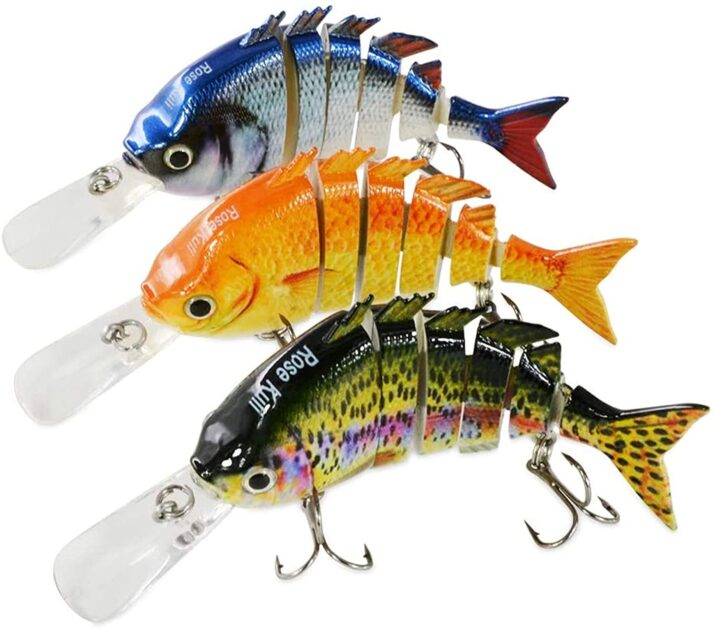
Best Lure Colors for Spring Bass
Other than water clarity, you should also pay attention to the season. There are slightly different color preferences in pre-spawn and post-spawn periods.
For instance, the most popular food for bass is crawfish in the pre-spawn period, so the most strategic bait would be a crankbait with a crawfish pattern on it. Usually, it’s colored bright or dark brown, making the perfect imitation of the real crawfish.
Lure Colors for Summer Fishing
On the other hand, bass usually feed on small bluegills and sunfish in the post-spawn period. So, using lures mimicking bluegills and sunfish with similar color shades would be a strategic move.
Bass also go after shad in summer, so the best colored lures for summer fishing would be close to shad colors, grey with a white or lighter belly.
Other than these patterns, some of the most successful colored lures in summer are green, pumpkin green, grey, black, dark blue, white, and patterns in these colors.
Making lures look like a real target for bass is the most practical move to catch fish easily and swiftly.
Winter Bass Lure Colors
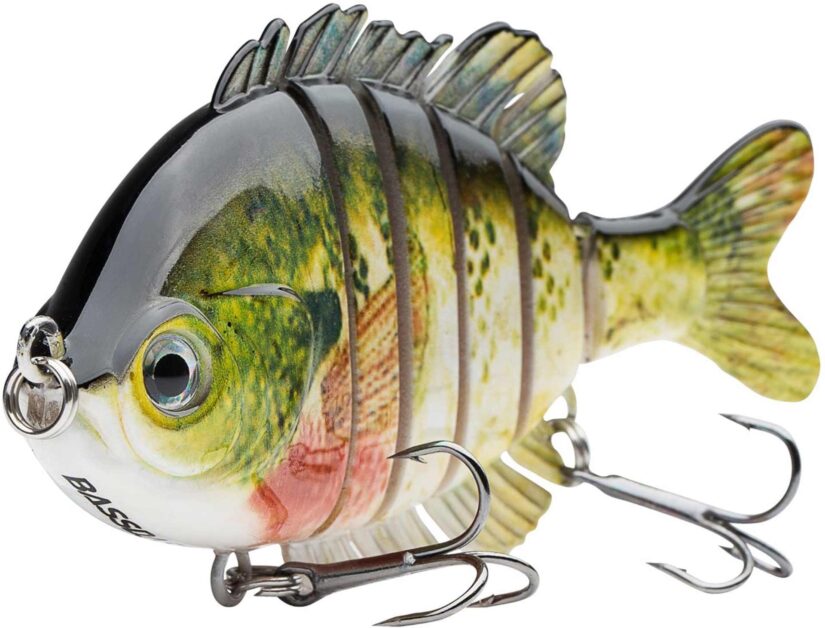
Bass are most inactive in winter and our mission is to make the lure as attractive as possible so that bass will attack it right away.
One of the most common lure patterns that work best in winter fishing shad patterned lure. Bass most frequently consume shad in fall and winter. The lure mimics a small shad perfectly.
Also, the bluegill pattern is great for the whole year, you can also use it in winter.
Generally, vibrant and bright colors are best in winter. For instance, orange, yellow, vibrant blue, and other colors that are easy to notice.
Lure Color Based on the Weather
Weather conditions play an integral part in choosing fishing lure colors for bass fishing, as it determines how much light there is and what level of visibility the fish have.
Generally, we can simply distinguish between light and dark days. If you know what type of lures to use on sunny and cloudy days, you’ll be able to choose the best color suitable for any weather.
What Color Lures to Use on Sunny Days
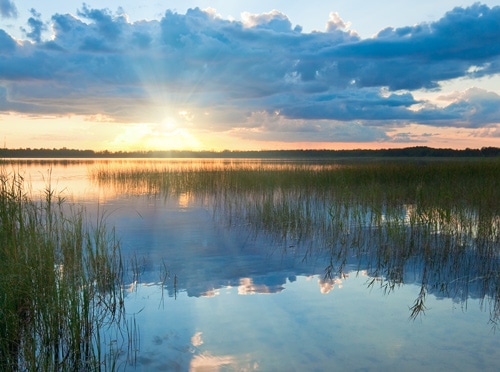
Usually, the best lure colors that you can use on a sunny and light day are natural colors.
Bass have a great vision, they interpret colors almost as we do, so they’ll identify the bait clearly on a sunny day. Our aim is to make the lure look close to the real creatures bass would normally hunt for. So, natural-looking bass lures with light colors are the best in this case.
Natural green, light blue, white, light brown, light grey, and other light colors are recommended. These colors mimic bluegills, frogs, shad, and crawfish perfectly. You can even use specially patterned baits that look exactly like crawfish, bluegills, and all the other creatures bass is interested in.
What Are the Best Lure Colors for Cloudy Days
Fish visibility level goes significantly lower during cloudy and dark days. So, our goal is to make the lure stand out somehow and let our target bass see it easily. For this reason, we use bright lures that are easy to see in dark and murky weather.
You can use all the colors you would use in muddy, unclear water. Shiny yellow, vibrant orange, dark green, black, dark blue, and bright chartreuse. Also, white spinnerbaits are very commonly used with great success on darker days.
Best Lure Colors For Bass
When you are fishing for bass, color selection becomes very important. You need to know which colors will work best in different situations and when you are fishing for specific bass species.
You have to understand that not all lures attract fish of a particular type, but they do help make it easier to catch them if they happen to be active at certain times of the day or year.
The 2 best all-round colors for me when I fish for bass are green and red. These 2 colors are my go too if the experimental colored baits I'm using are not catching much. I find that these 2 colors bass can see well.
Best Lure Color for Largemouth Bass
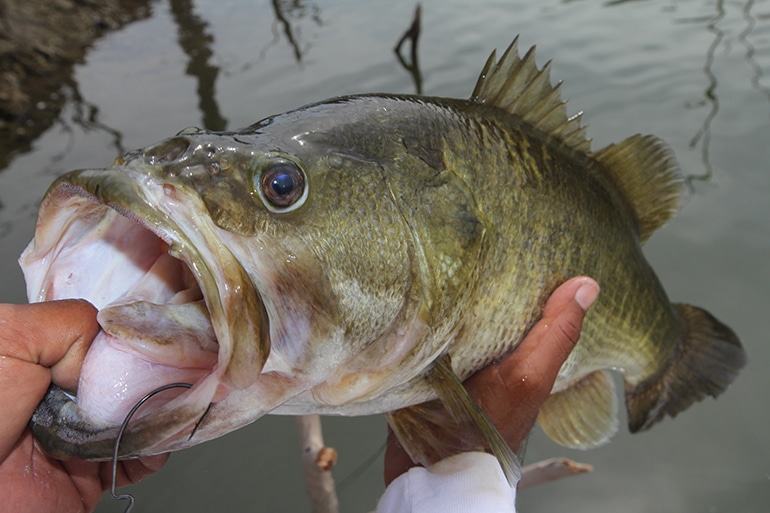
Largemouth bass like a lure with an orange color. Chartreuse, dark green or yellow-green are also good colors for largemouths in the spring and summer.
Best Lure Color For Smallmouth Bass
Smallmouth bass love lures that have purple, red, or bright blue lures on them as well as white spinnerbaits, nickel silver blades, aluminum blades, and deep diving crankbaits.
Best Lure Colors For Striped Bass
Stripers prefer brownish basic colors and hues such as earth tones or black but they will go for most colors. I find bait color is not as important when you are fishing for stripers.
Choose Lure Colors for Night Fishing
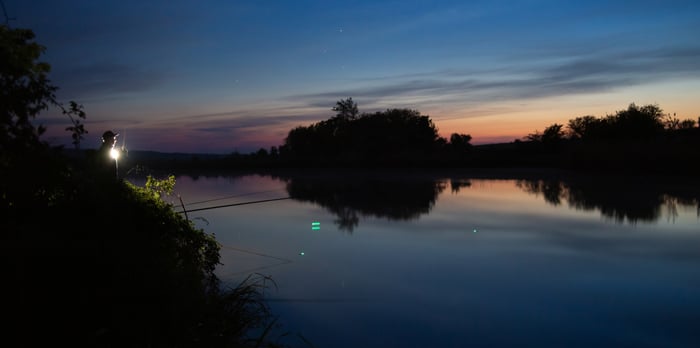
Dark-colored lures are the best for nighttime fishing, as the visibility of fish is low. It’s especially hard for them to see clearly if the moon isn’t reflecting enough light or it’s hiding behind clouds.
Our goal is to make the lure as visible and eye-catching as possible, so creating a good color contrast will definitely make the bass see our bait right away.
The most preferred colors are black, dark grey, dark brown, and white.
Ready to Choose Your Bait Color?
There are lots of colors to choose from, but some of the best lures include fish-pattern ones that mimic the real prey of bass perfectly. Most commonly used lures are with patterns and forms of crayfish, frogs, lizards with different colors and patterns on the back and sides, small snakes, bluegills, and many other fish species that are generally very small or medium-sized.
While trying to mimic the prey of bass, choose the creatures that are most common in the area, so that they are used to it, but never fear to experiment with lure patterns.
A lure color selector and a bait color selector can provide great assistance, if you’re still in doubt and can’t decide what shades to pick for different occasions.
If you want to experiment with bait colors for fishing, you can even purchase the bait kit with a variety of shades and try all the colors you think would create a great contrast in different locations, seasons, time of day, weather, and water conditions.
Don’t forget that there are no exact rules and scientifically proven preferences for choosing lure colors so feel comfortable and free with experimenting with it. The only thing to consider is the importance of creating a contrast between the colors of the lure and the water or surroundings (tall grass, rocks, water plants).
If you can’t determine what the best color is for creating a noticeable contrast, don’t think too much and pick a lure with different colors, striped, or with mixed patterns and shades. Even if the bass won’t notice one of the colors, it might get attracted by the bright stripes and decide to attack the lure.
Don’t spend too much time choosing a bait color, pick whatever you think is logical, and after some practice, you’ll eventually know exactly what shade to use in each situation.
The best tip I learned was to keep your lures clean and maintain their vibrance in order for the bass to keep biting.
Final Thoughts
Now that you’ve read all the information you might need in order to choose the lure color wisely and quickly without losing precious time, you can confidently pick one or a few colors and go fishing on any season and time of the day. Also, choosing the correct line color will also make a huge difference
Enjoy your fishing experience 🙂



